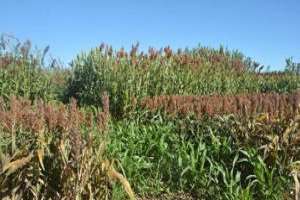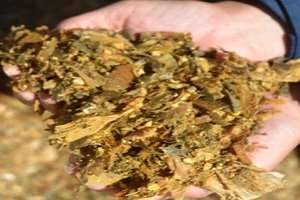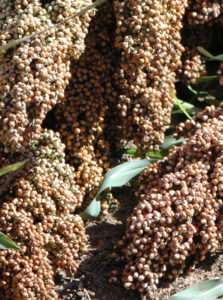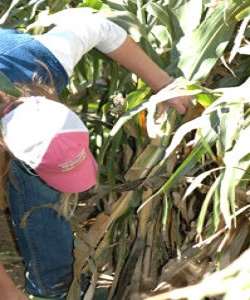Unique data for forage sorghums, including varying feed values and management needs of different hybrids, is coming out of a Texas A&M AgriLife trial being conducted near Bushland.

“On the Texas High Plains, forage sorghums are a very good fit with the livestock industry, especially as dairy and beef cattle forage needs increase at the same time as we become water-limited across the Ogallala Aquifer region,” said Dr. Jourdan Bell, Texas A&M AgriLife Extension Service agronomist in Amarillo.
Forage sorghums are a drought-tolerant, water-efficient alternative to corn, Bell said.
“While corn is often the silage of choice because of its feed value, forage sorghums have a feed value 80 to 90 percent of corn, if managed properly,” she said.

“However, producers are recognizing that we are really going to have to manage our forage sorghums for optimum quality and production, even more so now with the additional concerns about the sugarcane aphid.”
Bell said the data from the forage sorghum trials on a cooperative farmer’s land near Bushland will be unique because she is working with Dr. Ed Bynum, AgriLife Extension entomologist, and Dr. Ted McCollum, AgriLife Extension beef cattle specialist, to evaluate the effect of the sugarcane aphid pressure on forage sorghum production and quality.
“There is such a vast difference in production and quality between sorghum types and hybrids, so it’s really important that we evaluate different forage sorghums specifically for silage to help producers optimize not only their production with regards to tonnage but also the quality at harvest.”
That’s where the value of the forage sorghum trial, currently in its third year, comes in, Bell said. Her work is a continuation of long-term research conducted at Bushland for over 15 years.
The Bushland forage sorghum trial includes over 100 different sorghum hybrids, including forage and grain sorghum types.
Measurements are being taken for yield and quality at harvest, she said. While finished silage is ultimately a result of the product used, it is important the end users recognize that the quality of the silage also can be affected by their management.
Bell, who also has a Texas A&M AgriLife Research appointment, is conducting a secondary study, funded by the Texas Grain Sorghum Board, to evaluate ensiling duration with a select forage sorghum. She will be aided in the research by a West Texas A&M University graduate student.

“We are looking at forage that has been ensiled for 30, 60 and 120 days to optimize the feed value — both digestibility and carbohydrate availability — for a forage sorghum that has been processed with both a cracked and uncracked berry.”
Another area of concern for the end user is the grain processing, she said. Often times the sorghum berry is not cracked when it is ensiled, which can reduce the feed value and the carbohydrate availability.
“So we are looking at forages where the berry has been cracked as well as where it has been unprocessed, so we can see how ensiling duration might affect the feed value,” Bell said. “Ultimately, the silage is only going to be as good as the forage that was used and how that was managed.”
One added challenge this year has been sugarcane aphids, she said.

“We have sprayed sugarcane aphids twice throughout the growing season, however, there is concern that there are potential reductions in both yield and quality. So we have a very timely opportunity to evaluate its effect on production and quality of the forage.”
Bell said several different forage sorghum hybrids have been infested at different levels with sugarcane aphids, and will be ensiled to determine the effect of sugarcane aphid level of infestation on that end-use product.
“That’s something that is very unique,” she said. “At this time, there is nobody else who will have that data.”
Bell reminded producers that just because forage sorghums are drought tolerant, that does not necessarily mean they can avoid irrigation. Forage sorghums managed for optimum production can use three-tenths to four-tenths of an inch of water per day at periods of peak water demand on the Texas High Plains.
Click here to see more...